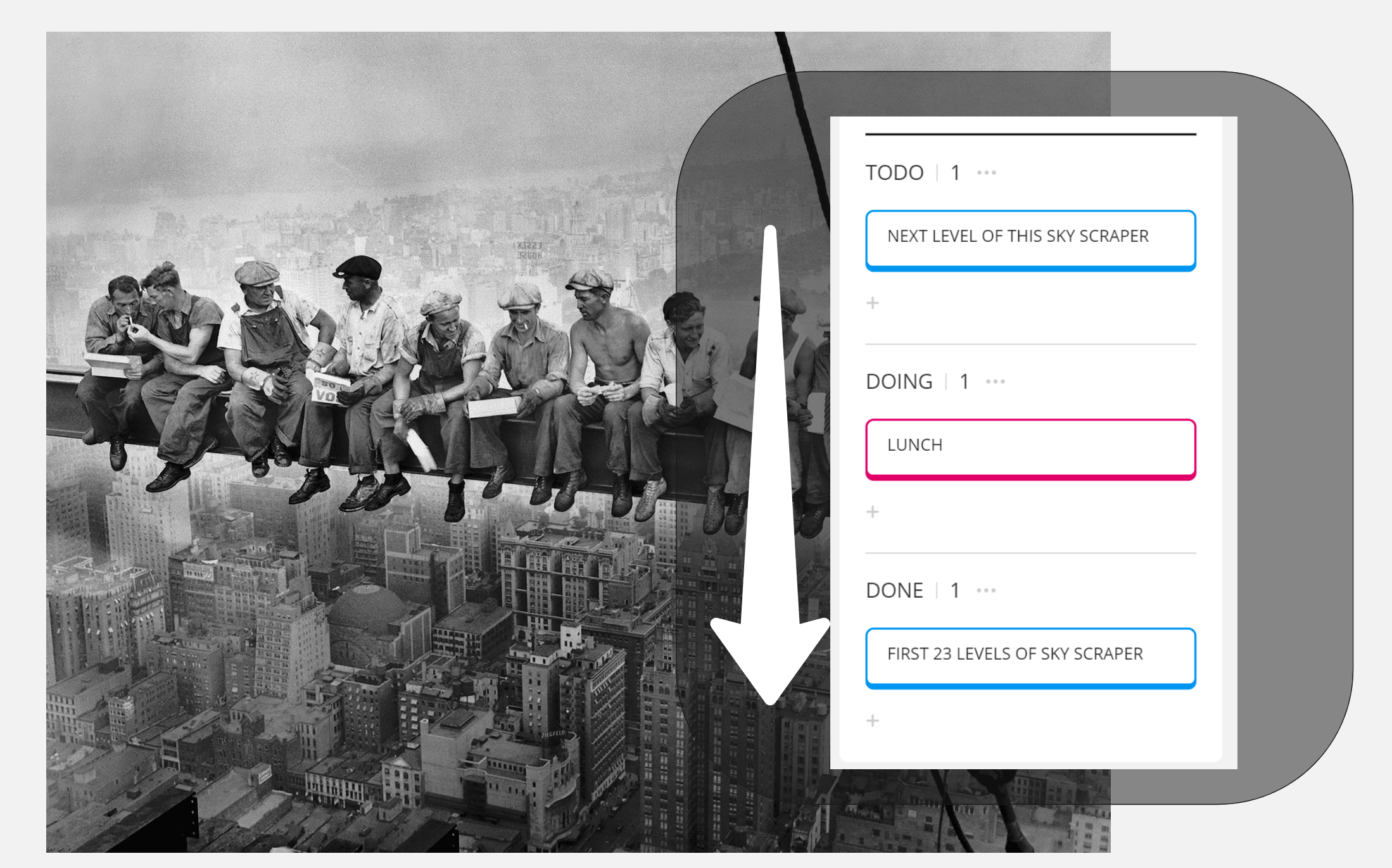Provocative Question: Are we Kanban-ing Wrong?
Sitting down to clean-up and sprint-prep our work planning board with a client recently I began to scratch an itch that had been bothering me…
Tasks in GANTTs/PERTS etc flow one way with respect to time and task and Kanban conventionally flows the opposite way.
GANTT: Right to Left task flow
GANTT, PERT and other such time planning visualization systems (In western convention, as far as I know, any way…) layout time as: left is earlier and right is more future. To read these over time a ‘now’ window slides across the time line from left to right. The “to do” items start off to the right of the time window, the ‘done’ items end up on the left of the window and the ‘doing’ live in the middle of the window. The flow of tasks with respect to this time window is from right to left.
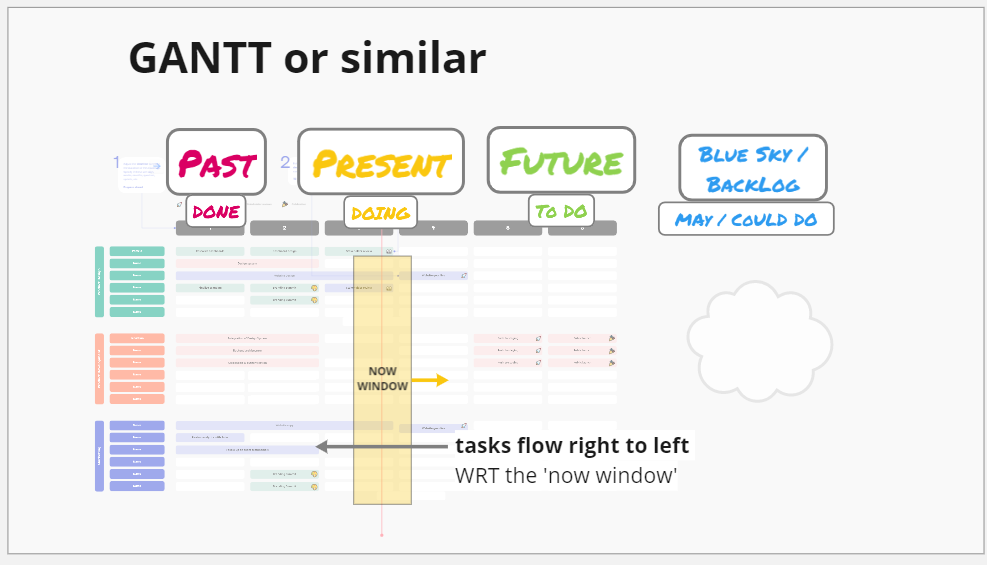
Kanban: Left to Right task flow
Conventionally a Kanban works in the opposite direction; where tasks flow from left to right.
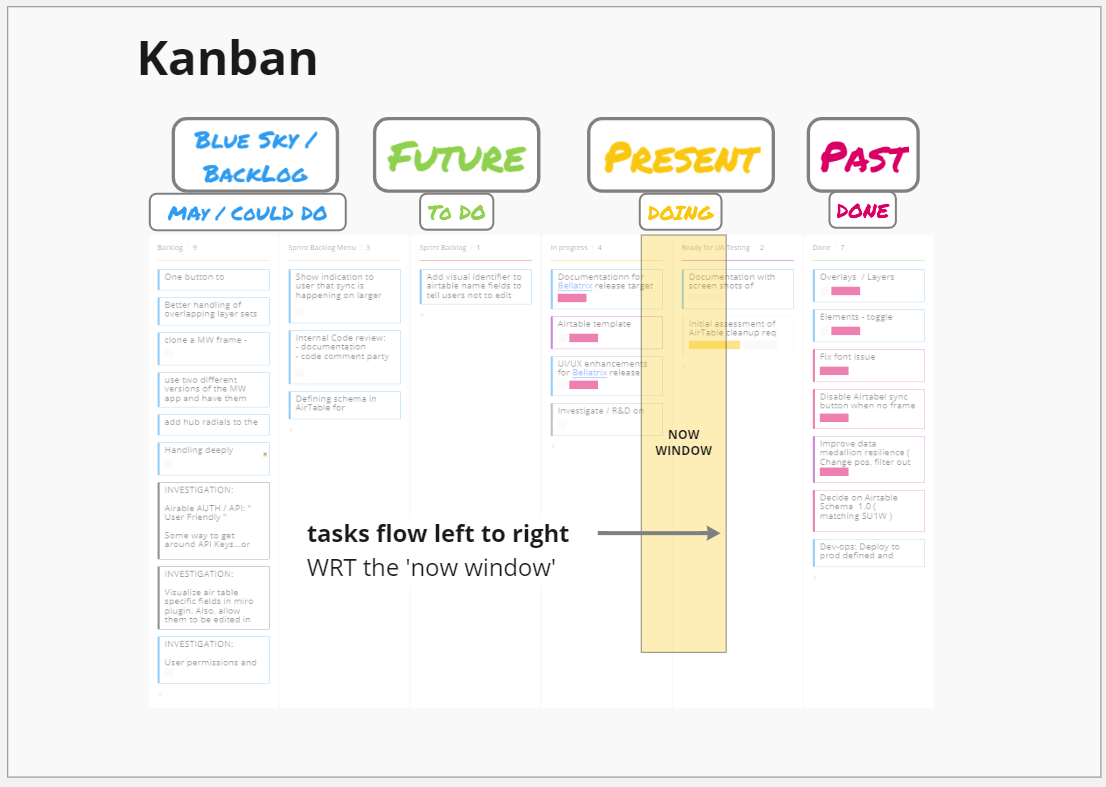
_______________
Our progress in a board is almost always a general flow of adding new ideas and work product (design, solution architecture, testing, documentation) to the right and down. That you start on the board in the upper left and move right and down. Past and completed is left on board, future is out to the right.
SO: We’re experimenting with inverting our Kanban:
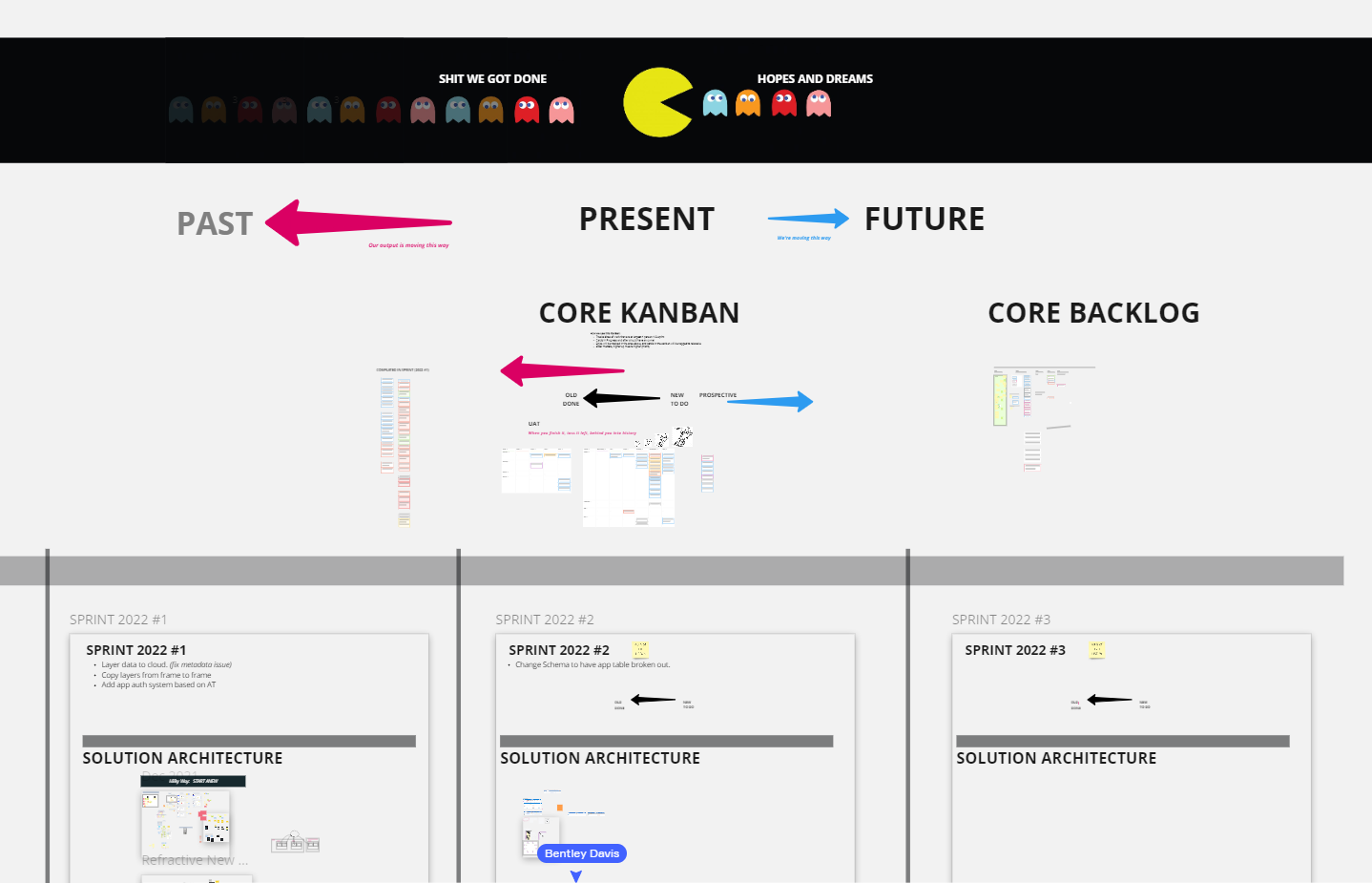
Our sprints progress from left to right. Our future sprints can be planned out to our right looking at our core backlog above. Progress on our current sprint takes place .
When time progresses we move the Kanban and the backlog over to the right ( sliding the time window). And completed and tested/accepted story cards remain above the sprint in which they were implemented. History is scannable then over to the left.
Our Kanban has its future blue-sky back log out to its right ready to be fed in sprint planning.
Like a PacMan heading to the right eating task after task.

It requires some re-learning/re-orientation to the new Kanban flow.
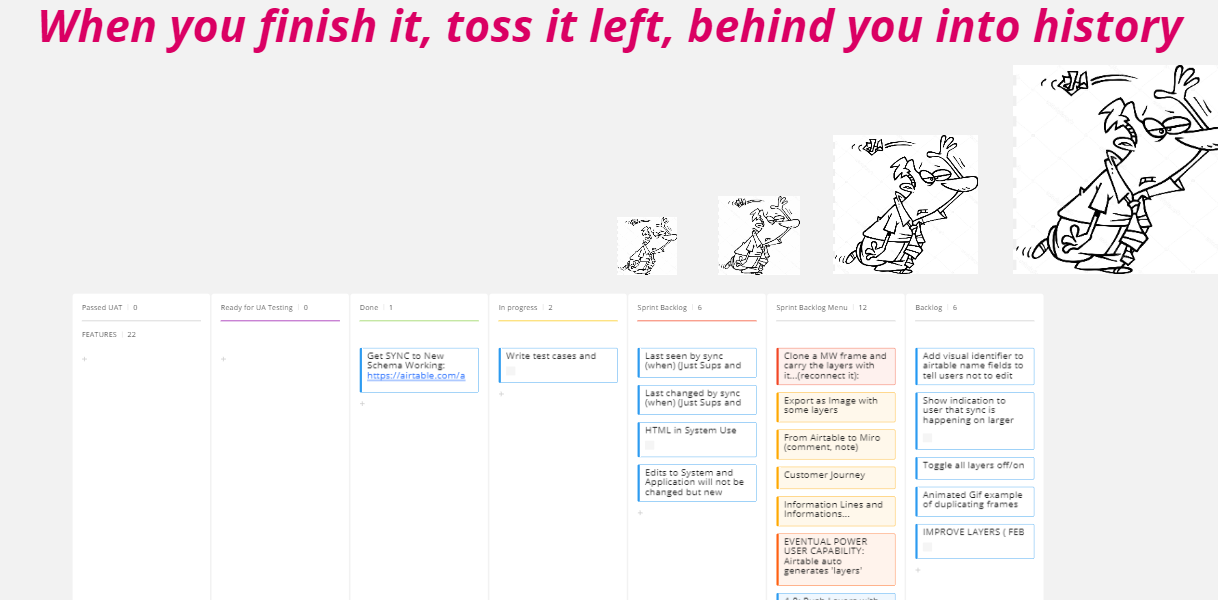

Completed and accepted items that exit the Kanban and are placed permanently above their sprint.
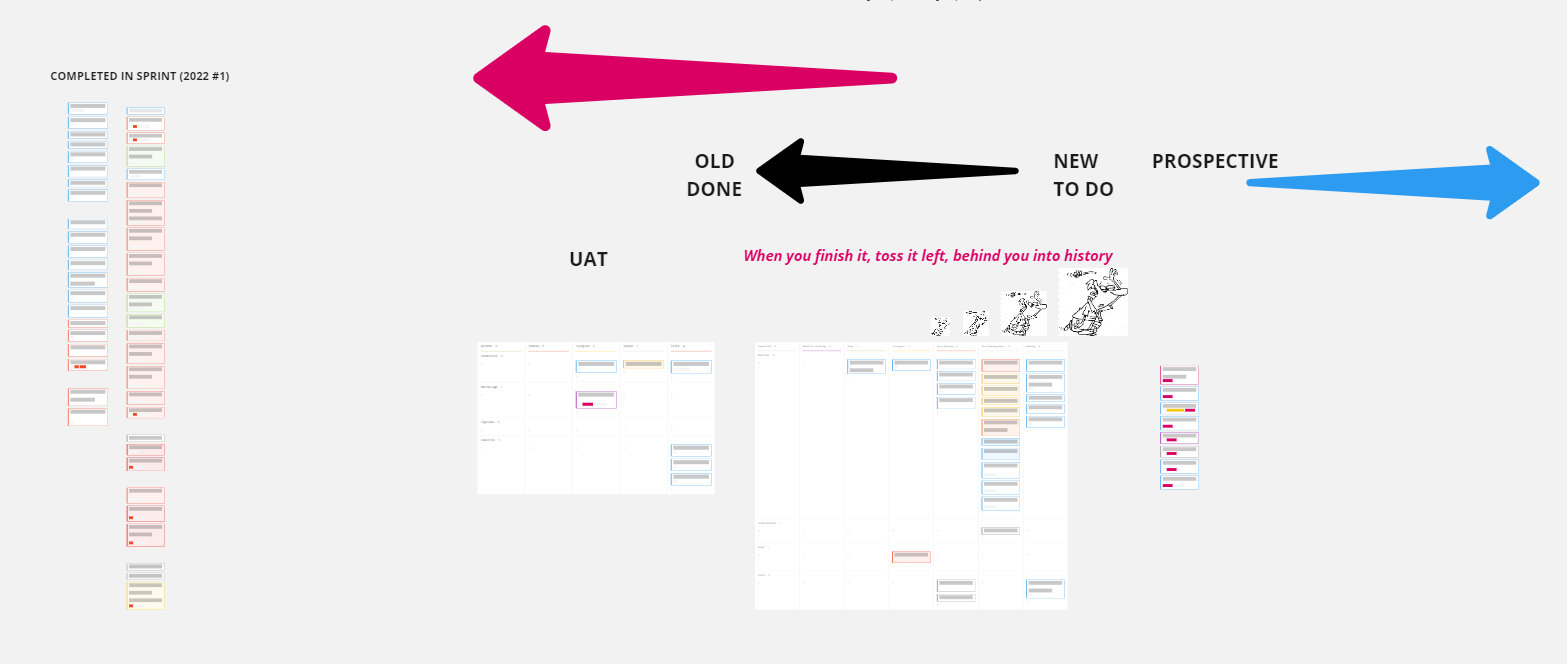
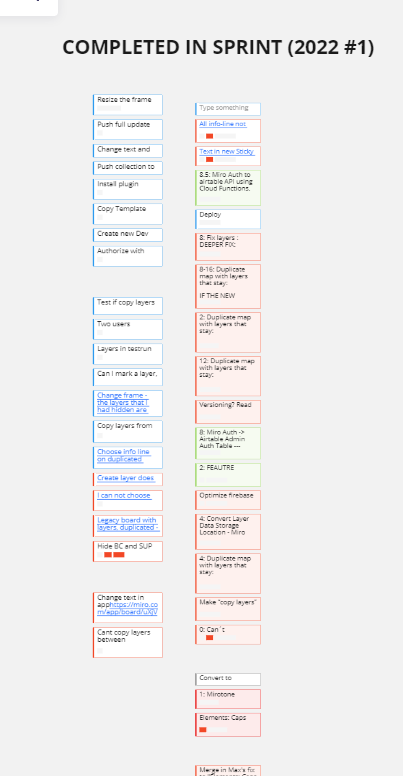

_________
Conclusion:
It is at first a bit odd to re-orient to the Kanban, but its starting to solve the problems and cognitive dissonance we had before where our future lived on our board’s right side but on our kanban’s left side and visa versa for the completed items. Now all prospective work can take place on the right. All history lives on the left. Our kanban and backlog can now flow much better, perpetually.
Curious...
… what others think. LMK in comments.






